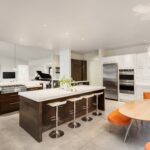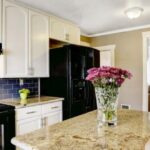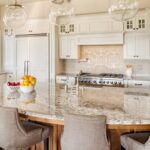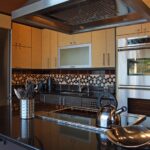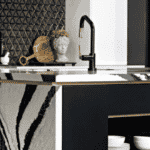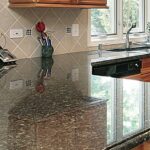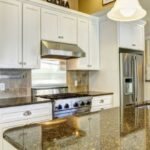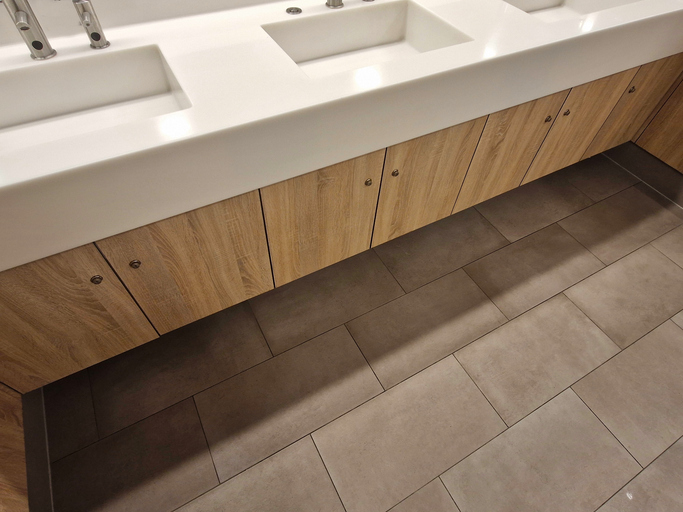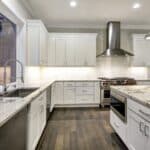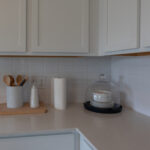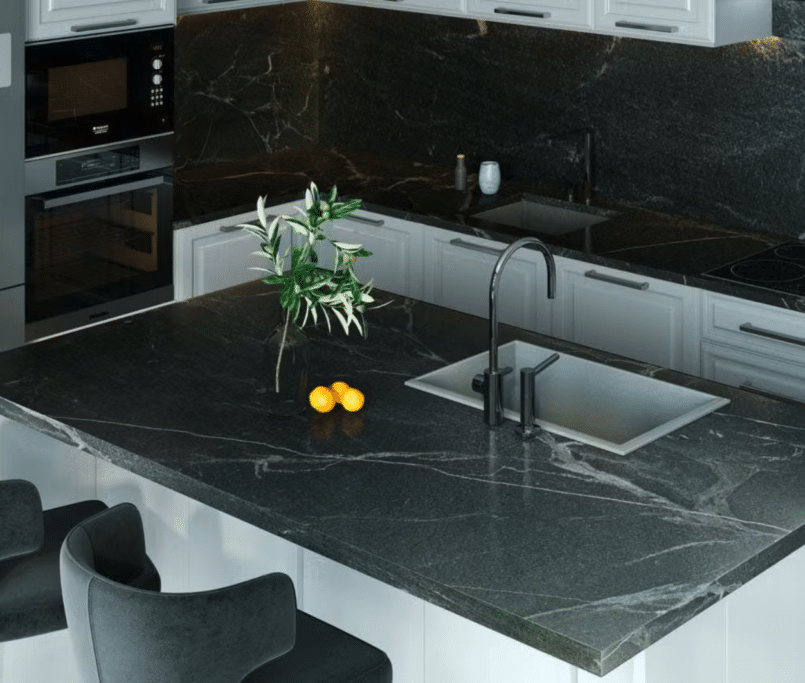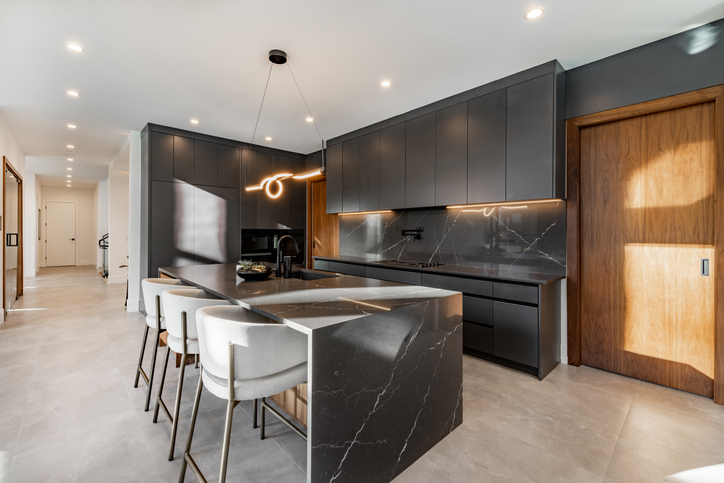Corian vs Other Countertop Materials
Corian countertop material has become very popular. To determine whether it is worth spending money on Corian or not, it would be worth comparing its prices and characteristics to other materials in 2025 that are most likely to become popular. We can recommend when Corian is the best option.
Corian vs. Quartz
-
- Price: The cost of quartz is about $50-$100 per square foot, as compared to $26 to $65 per square foot of Corian.
- Durability: Quartz, made of more minerals (90% vs. 66% in the case of Corian), is more resistant to heat and scratches and less repairable.
- Looks: They both look like natural stone, although Corian has seamless joins, which make it an advantage when looking to achieve a fresh appearance.
- Resale Value: Quartz will generally increase the worth of a home because of its impression of quality.
Corian vs. Granite
-
-
- Cost: Granite has a cost of 40-60 dollars per square foot, which is a little more expensive than the average cost of Corian.
- Maintenance: Granite is porous and tends to absorb spills, and thus needs to be sealed regularly, whereas Corian is a non-porous surface that is easy to maintain and only needs soap and water.
- Durability: Granite is more durable than Corian, which is susceptible to staining; Corian is stain-resistant yet not as heat-tolerant as granite.
-
Corian vs. Laminate
-
- Price: Laminate is much cheaper, ranging from 10 to 30 dollars a square foot, and thus an affordable substitute.
- Durability: Laminate is shorter-lived and more subject to scratches and burn marks, and can be repaired.
- Aesthetics: Corian can be provided in a more premium, stone-like finish, unlike the plastic look of the laminate.
Corian vs. Other Solid Surface Brands
Such brands as Wilsonart or LivingStone have a material price per square foot costing 20 to 30 dollars, which is a bit cheaper relative to Corian. Nevertheless, Corian differentiates its products based on brand awareness and warranty (10 years).
Pros and Cons of Corian Countertops
Pros
- Seamless Design: The unobtrusive joins form a modern look, which is ideal with bigger islands or built-in sinks.
- Non-Porous: Does not stain or allow bacteria or mould growth, and needs very little maintenance (soap and water).
- Repairable: scratches and burns are buffered out using mild abrasives, and this increases longevity (20 30 years under proper care).
- Versatility: In more than 80 colors and with the opportunity to create any shape, it fits any design.
- Warranty: DuPont offers a 10-year manufacturer’s warranty.
Cons
- Sensitivity to heat: is not as heat-resistant as quartz or granite; a hot pan requires a trivet.
- Scratch Prone: Less hard than natural stones, there is a risk of scratches; it is necessary to use cutting boards.
- Resale Value: Has less value to a house as compared to other surfaces like quartz or granite.
- Price: It is higher priced than laminate or other solid surface brands, and this could likely turn off a price-conscious customer.
Benefits of Corian
1. Timeless Elegance with Modern Practicality
Among the future trend information that stands out about Corian countertops in the year 2025 is the preference for colors and designs that resemble natural stone, especially marble. Popular shades such as Carrara Lino and Calcacatta Greige have soared in popularity at the height of their capacity to emulate the rich veining and gentle coloring of top-of-the-line marble, but with the easy-to-clean constituent of a solid surface material. The options can deliver the elegant and high-end aesthetic of natural stone but are not associated with the maintenance drawbacks, e.g., sealing or staining.
2. Bold Neutrals: Modern Simplicity with Vibrant Accents
In 2025, neutral tones still reign supreme in the new design of kitchens and bathrooms, with the color scheme in Corian of whites, grays, and beiges being at the forefront. The use of colors such as Aspen White, Stratus, and Neutral Concrete is very popular as it allows establishing an overall clean and airy atmosphere that could be used as a neutral background over which more active design solutions could be placed. But in 2025, these muted tones will be combined with bold accents, whether eye-catching backsplash, statement cabinetry, or attractive hardware, in order to give personality and dimension to a space.
3. Seamless Integration: Minimalist and Hygienic Design
In 2025, the blending of Corian countertops with sinks, backsplash, and other features is a trend that characterizes high-tech and minimalistic kitchens. The fact that Corian can be modified and attached without any visible seam makes it possible to have sleek, continuous surfaces that not only add to the aesthetics of the surface but also come in more functional features. Coved backsplashes and, to an even greater extent, integrated sinks, in which the countertop curves form around the backsplash to meet the surrounding wall area, are particularly common because of their sanitary qualities and clean lines.
4. Eco-Friendly Appeal: Sustainability in Design
The 2025 design world is changing because of sustainability, and Corian, with its environmentally friendly properties, stands out as an outstanding choice for an environmentally friendly homeowner. The GREENGUARD Gold certification verifies that Corian has strict standards of low chemical emissions, making it have a beneficial role in raising indoor air quality. Moreover, Corian can be renewed, which implies that it can be fixed rather than needing replacement, thus increasing the lifespan of the material, as scratches and damages can be repaired. There is also the addition of recycled content to some Corian products, which makes them even greener.
Tips to Save on Corian Countertops in 2025
To obtain optimal value at as little cost as possible, the following should be considered:
- Pricing: Request quotes from different suppliers and contractors. On the Internet, shops can also provide discounts of 50 per cent or more, such as SolidSurface.com or Worktops.net, off the traditional showrooms.
- Select Off-Season Installation: The best time to install would be during fall or winter (October-February) when cost savings may be possible and the electrical establishment is less occupied.
- Choose Basic Features: Sidelined with basic designs. Keep it standard as far as edges are concerned: stick with 1/2-inch thickness, matte finishes.
- DIY Final Touches: Know a way to add some finishing touches, such as backsplashes or other minor customization? Instead of hiring laborers to do it, it would cost you an approximate sum of $50 to $80 per square foot.
- Free Samples: Ask suppliers to provide samples of colors and finishes to be tested to prevent a later costly change.
- Use local contractors: Local contractors can often be competitive or even offer trade prices, ensuring that overall prices are cheaper.



